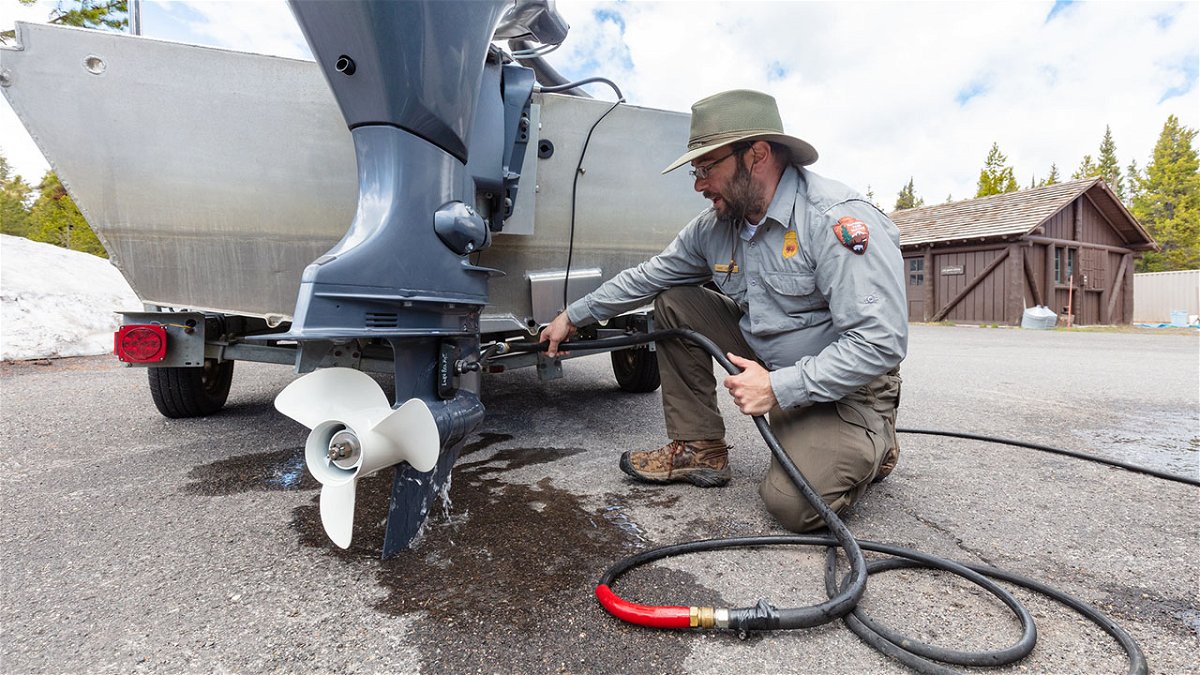Yellowstone aquatic invasive species boat inspection finds quagga mussels

YELLOWSTONE NATIONAL PARK (KIFI) - A Yellowstone National Park aquatic invasive species (AIS) boat inspector found quagga mussels on a visitor’s boat during a routine AIS inspection Thursday, June 17, at Grant Village. The inspector prevented the contaminated boat from launching.
Detection of the mussels prevented a major potential release of this highly invasive species into Yellowstone waters. If released into park waters, AIS can cause catastrophic changes to the ecosystem.
Quagga mussels (Dreissena rostriformis bugensis) are one of many AIS that pose a grave risk to the ecology, recreation and economy of the park and beyond.
Preventing the release of AIS is critical because control and removal after they become established in a watershed is usually impossible and efforts to reduce their impact can be extremely expensive.
To prevent the spread of AIS, park inspectors examine all boats, kayaks, canoes, and float tubes before visitors can launch them in the water. Boats with ballast tanks are not permitted to launch within the park.
Watercraft that arrive dirty or with standing water are subject to decontamination as some of these species are microscopic. Watercraft that cannot be properly decontaminated will be prohibited from launching.
Boaters: If you plan to use your own boat or angler float tube in Yellowstone National Park, you will need a permit and an AIS inspection. You can speed up the inspection process by arriving with a boat that is clean, drained and dry. Clean, drain and dry your equipment before visiting the park.
Read about watercraft permit and inspection locations and fees at Boating in Yellowstone.
Anglers: All fishing equipment and foot gear, regardless of material, can carry AIS. Clean, drain and dry your gear and do not move water or organisms from one water body into another. Footgear with absorbent felt or other fibrous material on the soles are prohibited while fishing in Yellowstone.
“I commend the Yellowstone AIS inspection team for their efforts at preventing the introduction of this dangerous aquatic invasive,” said Superintendent Sholly. “It’s critical the public continues to partner with us to do their part to prevent the spread of AIS in Yellowstone waterways.”






